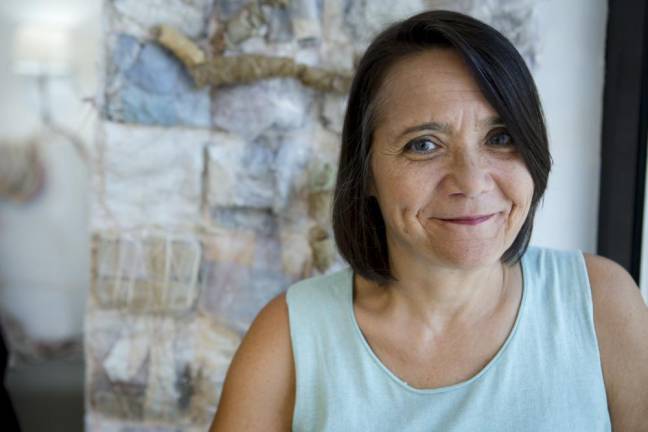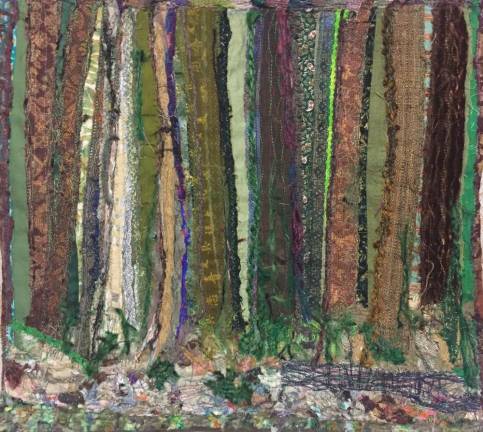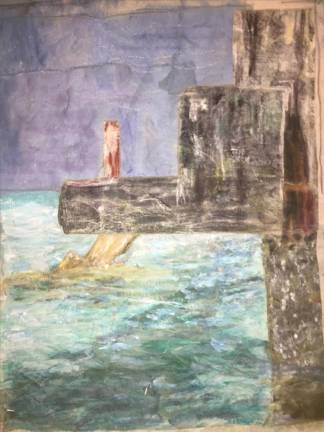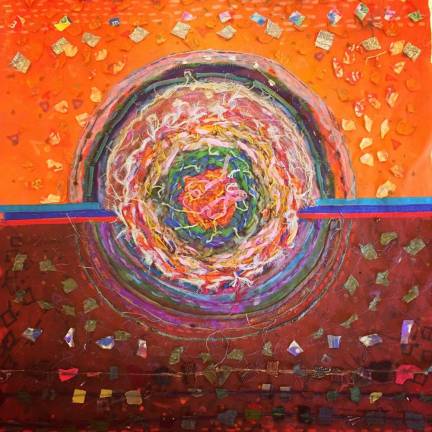“How open are you to discussing your tumor?”
“Oh, completely.”
Alyson Vega was in the middle of her life in 2007 ‒ on a ski trip with friends ‒ when she got a headache that didn’t go away. “I found out that I had a benign brain tumor: cavernous angioma.” The headache, the first tell, was only one symptom. This brutal thing is an “abnormal cluster of vessels with small bubbles (or caverns) filled with blood,” according to Mount Sinai Hospital. The blood flow there is slow, with the potential to leak out. Vega’s did leak - in her cerebellum, near her brain stem area.
She’d been teaching math at a private school for a little over two decades when the nightmare started. After an MRI and an angiogram, she went in for surgery – which meant taking the rest of the spring off, then heading back to work in September. “I took on the full teaching load when I got back, but I had no idea how much I’d changed - my personality, the skills that I’d lost, my self-awareness. I didn't know how I was coming across [to people].”
Her brain had suffered damage, but Vega didn’t realize how much. Many months later, she was diagnosed with Cerebellar Cognitive Affective Syndrome. It’s a clinical condition, with an array of symptoms all of its own, that may follow any cerebellar disease. It is characterized by (among other things) the impairment of executive functions such as planning, abstract reasoning and working memory, and personality changes, with blunting of affect or abnormal behavior.
"I Was Falling Apart"
“Memory and attention were problems,” said Vega, now 57, “but far worse for me were reading social cues, planning, disinhibition, mental rigidity, and emotion regulation. Basically my personality changed and I did not have the self-awareness to recognize it” She lost the ability to multitask and plan. She couldn’t teach, write on the board and talk, especially when the students were talking ‑ which was always - and also sense if somebody needed something different. “I was falling apart,” she said.
“I’ve always suffered from a major depressive disorder,” Vega continued, “teaching was one of the things that kept it at bay. That, and having my daughter. They were very positive influences on my ability to perform and function.”
Not only was math the “color of her parachute,” it was a way of thinking that befit her craftsmanship. She’d been following orderly sewing patterns since she was a child. “I taught myself to sew at a young age ‑ I wanted to make doll clothes. I didn’t know what I was doing, but I was interested.” She got her own sewing machine at the age of twenty-five. “I followed patterns, made quilts.” Her inspiration for the patterns came from magazines and books. When she was in college there was a quilt shop in Harvard Square, she bought a magazine there and started to teach herself how to hand quilt.
Vega was hospitalized twice after she returned to teaching. It was the third trip to the hospital when the weight of feigning normalcy became too heavy to bear. “My husband insisted, ‘You can’t go back there. You have to stop. ‘I agreed.” So, four years after that momentous headache, and after two-and-a-half years of struggling at a loved, comfortable job, Vega quit teaching in the winter of 2011.
A New Sense of Creativity
Her routine, her stability, had been disturbed and stolen. But the same versatility that guided her through her self-taught craft followed her through the next phase: a lot of time at home, working and reworking the familiar fabric materials.
Except that now, it was less restrictive and more creative. “From the surgery onwards, I began to make things. I would find things on the ground, bring them home, put them in a box, and paint on them. I started to take in things, because I couldn’t hold on to information; I sought organization, compartmentalization. I bought bags and boxes; organizing systems. I bought sweaters, washed them, cut them up, and sewed them back together in long, long pieces. It was comforting. I needed to be doing something. I still feel that way.”
The discovery of this therapeutic activity brightened up her life. It didn’t reverse the staggering effects of her brain injury, but it made it more bearable. “I felt very alienated. I’d have altercations with strangers. Someone said to me in the supermarket, ‘Why are you always talking to yourself’ — I didn’t even realize I’d been doing it. It was a coping mechanism, so I’d remember why I even went into the supermarket in the first place. I wanted to stay home and not interact with anybody.”
She did that for a while, until she found others who had suffered brain injuries, and joined some support groups.
Great People and a Lot of Support
In 2013, Vega heard about a New School panel that focused on mental illness and art. “By that point,” she said, “I was feeling that either I was making a huge mess, or I was making art.” She went to the lecture series and met the director of Fountain House Gallery.
She started attending gallery meetings, and officially registered with Fountain House to showcase her work. “I hadn’t been there before any of this, and it really saved my life,” said Vega. “Even when I’m not making art, there are great people there; there’s a lot of support.”
The Fountain House Gallery is an offshoot of Fountain House, an organization that harnesses the unique talent and substantial contribution that those suffering from mental illnesses make to their communities. “I don’t think people know enough about it,” she said, “but it’s a huge resource for people living with mental illness. I think it’s one of the most positive things that’s being done.”
The small change in her brain birthed a massive change in her art, art that's characterized by instinctual, unbound creativity. “My most successful pieces have been organic. When I’m not doing anything, I’m cutting things up and sewing them back together, in an arrangement that looks beautiful to me. Little by little, it starts to look like something. It begins with play; it’s messy. I know that I’m done when I love it, when I look at it, and love the way it looks. I don’t even know the rules of making art, so the fact that I’m breaking them, that’s what makes it feel creative to me. To try to make something that’s never been made before.”
Vega’s art is currently featured at the "Small Works" exhibit at Fountain House Gallery, on view through December 20th Her work will also be featured at the Fountain House benefit, titled "Mad About Art," on November 21, 2019. View her work on Instagram and Artsy.
"When I’m not doing anything, I’m cutting things up and sewing them back together, in an arrangement that looks beautiful to me." Alyson Vega



